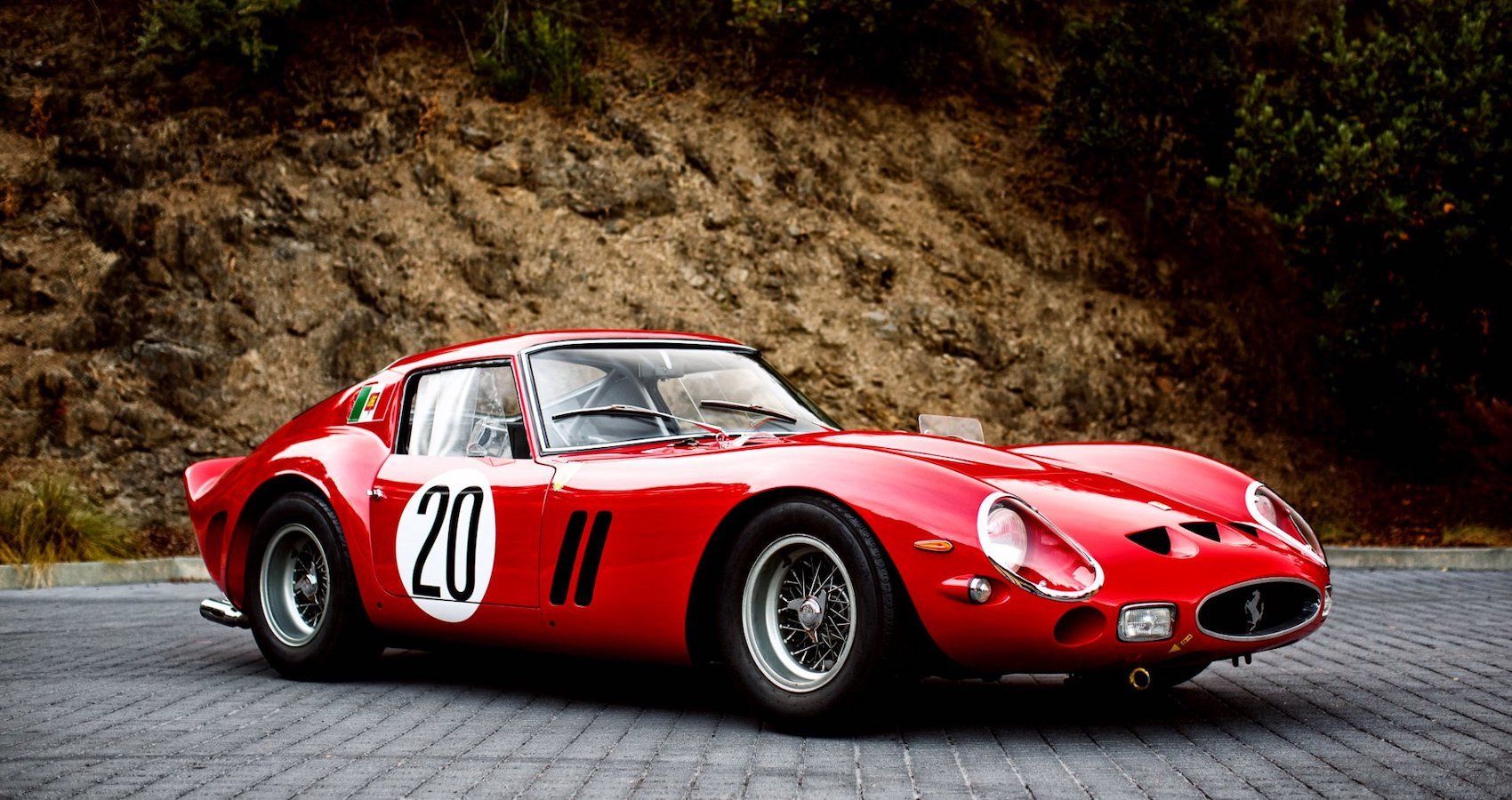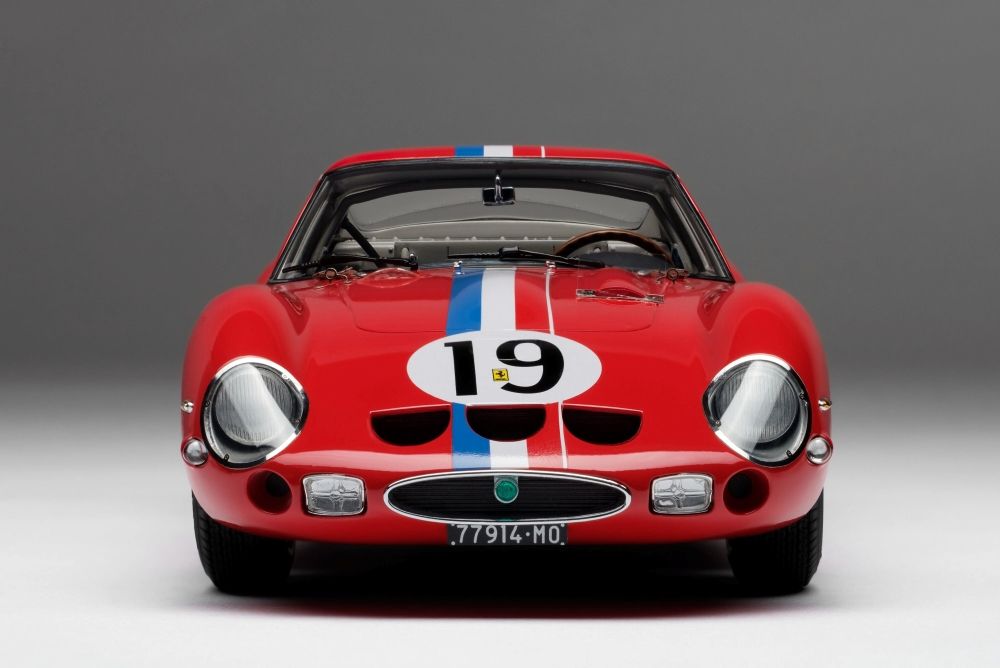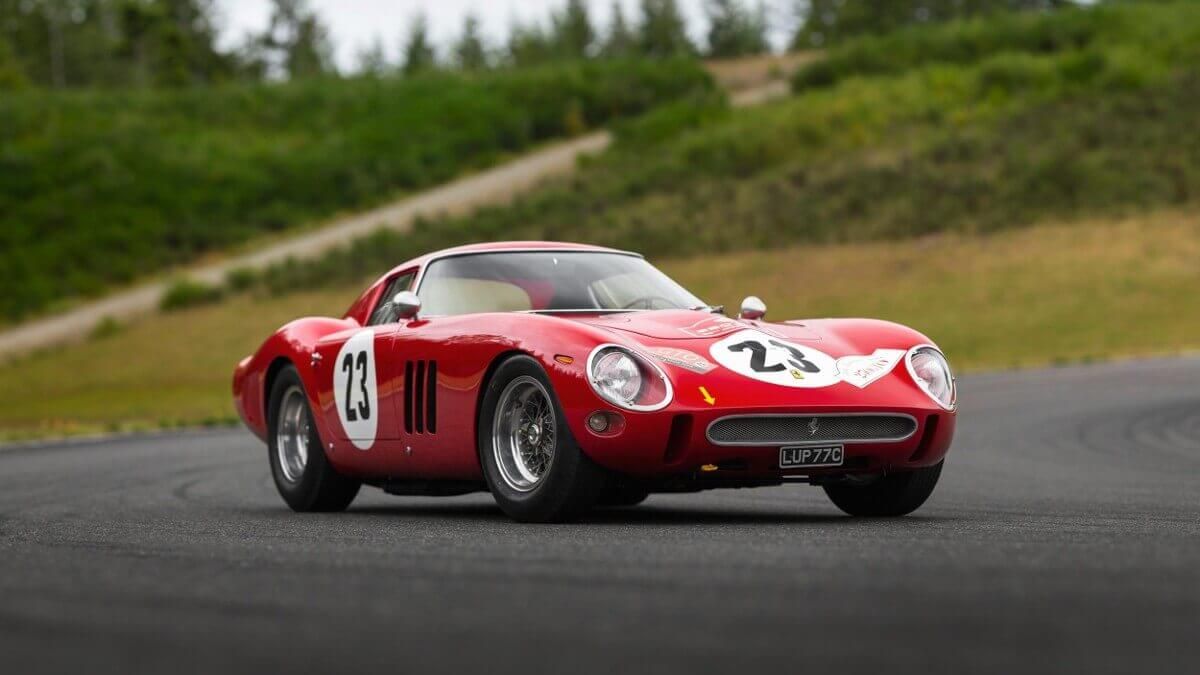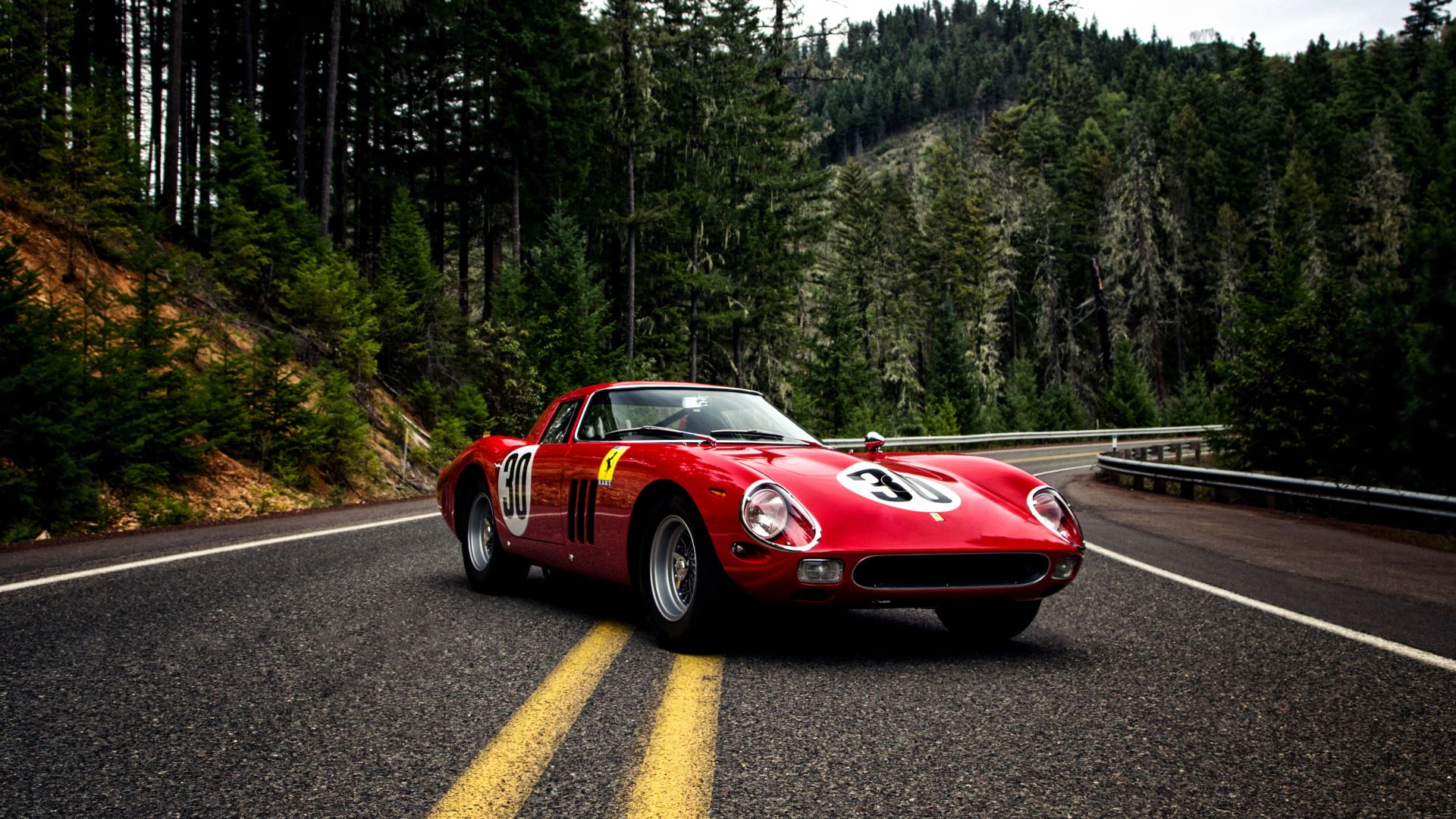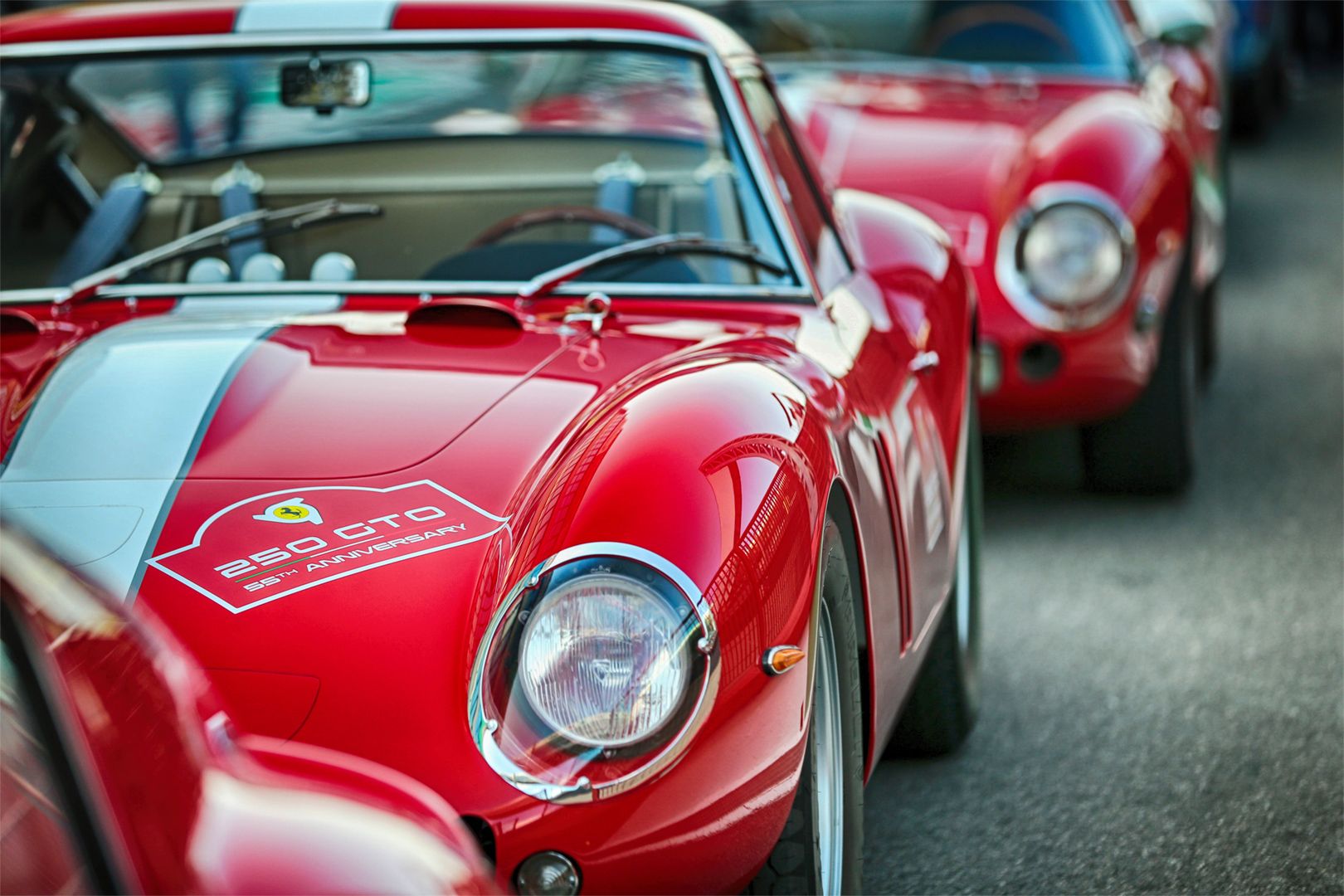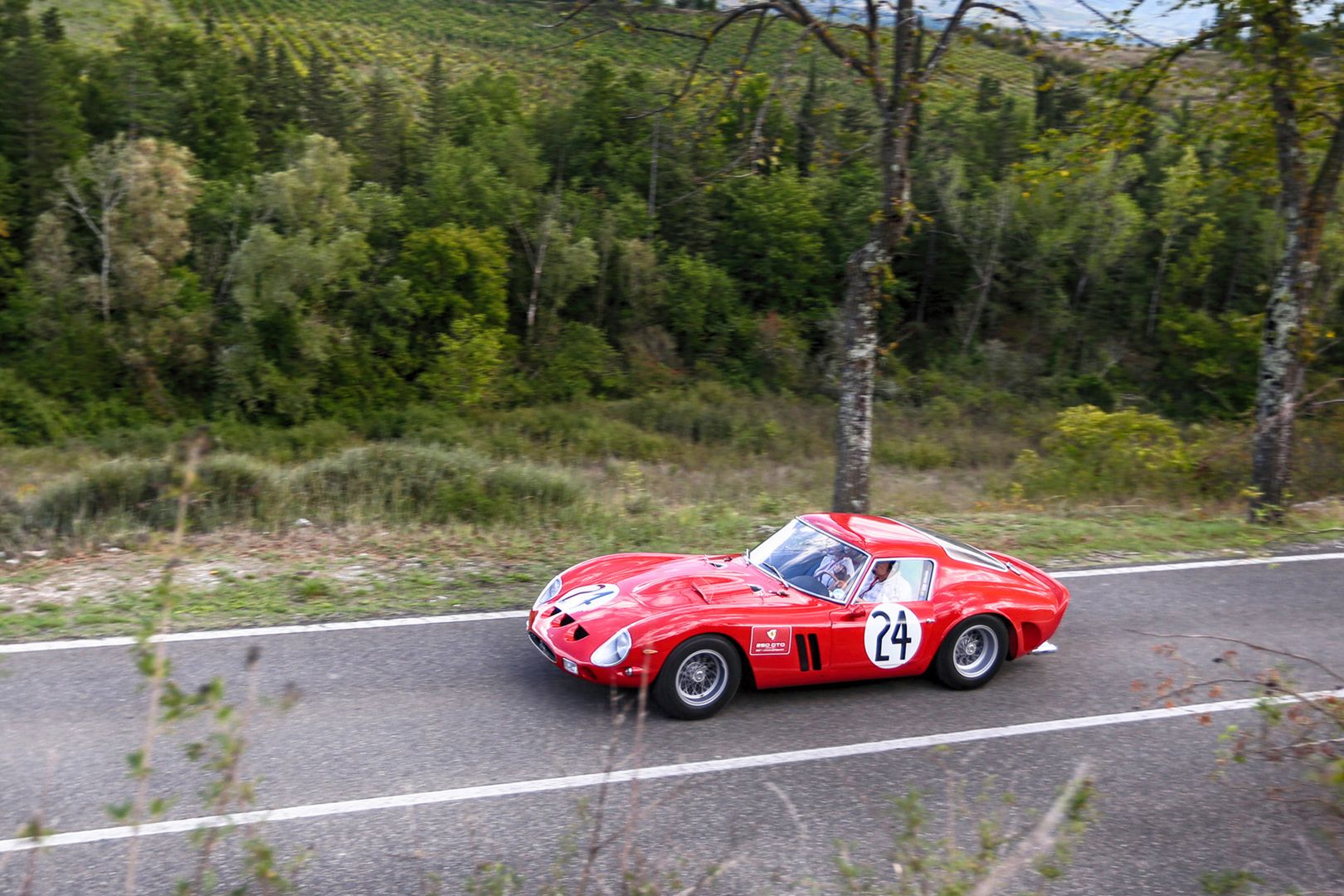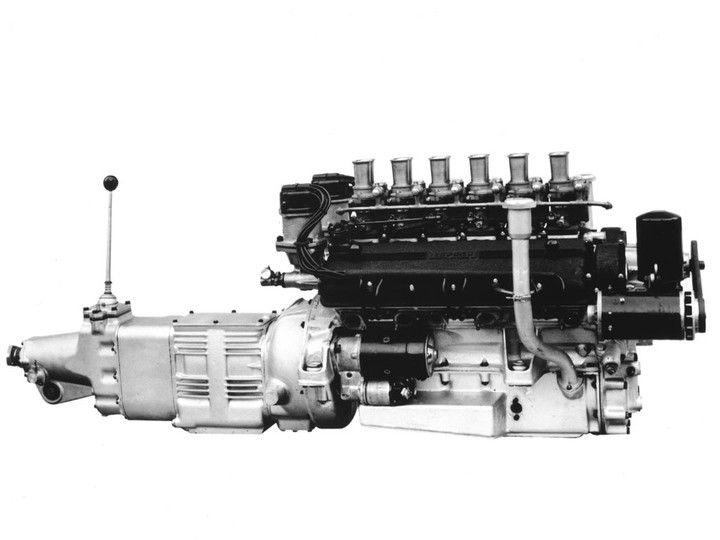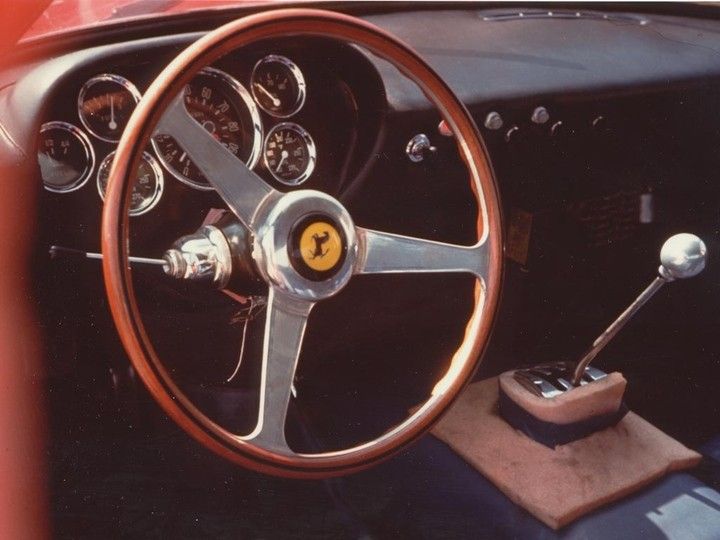The Ferrari 250 GTO is a Grand Touring car that Ferrari built between 1962 and 1964. This is the car the Prancing Horse says sums up the marque’s philosophy the best. Its defining elements are the magnificent V12 mill and aerodynamic design. Which says a lot since Enzo Ferrari is famous for constantly shaming counterparts by saying “Aerodynamics are for people who can’t build engines.”
It's safe to say this is the Ferrari model that represents Enzo Ferrari’s concession about the role of aerodynamics in vehicle performance. The ‘250’ in the Ferrari 250 GTO represents the displacement in cubic centimeters of each of its cylinders while the GTO is short for Gran Turismo Omologato, Italian for Grand Touring Homologated.
That’s precisely what the Ferrari 250 GTO was built for; homologation into the FIA's Group 3 Grand Touring Car category. Only 36 units were built, but the aerodynamic bodywork and powerful engine with bigger valves and dry-sump lubrication helped make the Ferrari 250 GTO an unforgettable legend boasting a 170 mph top speed. It’s worth a trip down memory lane.
The Car That Summed Up Ferrari Philosophy The Best
Ferrari described the 250 GTO as the best summation of its philosophy, which begs the question, 'what is Ferrari's philosophy?' That's easy. An entity's philosophy makes evident its deeply held beliefs and approach to life, work, and just about everything else. That said, Ferrari's philosophy is revealed in its dedication to sophisticated luxury cars boasting incredible speed and typically cost an arm and a foot.
The 250 GTO equally fits this bill because the Prancing Horse actually started from humble beginnings and then went on to conquer the world. Designated Type 539/62 Comp, the 250 GTO’s 2400 mm wheelbase chassis was an evolution of the 1961 Ferrari 250 GT SWB. Humble beginnings, indeed. Over the years, though, this chassis has undergone several revisions featuring more small bracing tubes until it became akin to a space frame chassis.
The chassis upgrades also included new front brakes, Koni adjustable shock absorbers, a stiffer suspension, and a lower drive line.
Ferraris are well-known for speed and their participation in motorsports. Hence, a car that sums up Ferrari's philosophy the best must feature racing technologies. In fact, the 250 GTO was a road-legal race car boasting many motorsport victories. Of course, the Prancing Horse is reputable for incorporating race-tech in its street car models. In the era that 250 GTO was born, this was chiefly done by fitting race engines into roadcars. These engines include the vintage V12s or the turbo era F1 cars of the 1980s.
Not losing its deep-rooted respect for powerful engines, Ferrari binned its contempt for aerodynamics to build the 180 mph 250 GTO, allowing the car to rule the World Manufacturer’s Championship and motorsport events like the 24 Hours of Le Mans. “Charisma,” Ferrari said, “came not only from its innumerable victories, but from the unique sum of its parts."
It was one of the most efficient form-meet-function designs the marquee had ever undertaken, and it's currently one of the most expensive cars in the world. Notably, a Ferrari 250 GTO with chassis number 3729GT received a high bid of $9,000,000 at Bonhams’ 1997 Gstaad Auction, although it failed to meet the reserve. The car was later sold on the private market for an undisclosed fee.
The current record for the world's most expensive Ferrari was set in June 2018 when a 1963 250 GTO with chassis number 4153GT was sold in the private market for a jaw-dropping $70 million, a far cry from the $30,000,000 estimated realistic value by SuperCars in 2012. Since the cars were purebred racing machines, some lost their original engines and aluminum body, inadvertently driving up the value of the still intact copies.
The Ferrari 250 GTO Features A Thoroughbred V12 Mill And Removable D-Shaped Panels
Barring the 1964 Series II-bodied examples, all 2-seater Berlinetta Ferrari 250 GTO produced ‘had three removable ‘D’-shaped panels, retained by quarter turn fasteners, on the upper face of the nose, for increased radiator air throughput, the pattern being repeated with three similar uncovered openings in the underside of the nose panel.’
Thirty-three (Series I) examples rolled out between 1962 and 1963, while the last three (Series II) produced in 1964 mirrored the 1963 Ferrari 250 LM’s bodywork, although four examples from Series I were later updated to the Series II bodywork in 1964. It has a curb weight of 1,940 lb.
The prancing horse was proud of the V12 mill that proved a perfect companion to the aerodynamically optimized body. It could reach 62 mph in a shuddering 2.9 seconds. Tied to a 5-speed manual transmission the engine was good for 102 horsepower per liter and up to 300 horsepower, with a compression ratio of 9.8:1.
It rode on an independent suspension system, the front of which features unequal-length wishbones, co-axial coils, telescopic shock absorbers, and an anti-roll bar. It had live axle rear suspension with twin radius arms, semi-elliptic springs, co-axial coil springs, and telescopic shock absorbers.
Ferrari says the 250 GTO was "the pinnacle of development of the 250 GT series in competition form, whilst remaining a road car." It finished second overall to a Ferrari 250 Testa Rossa sports racing car in its maiden 24 Hours of Le Man's voyage, driven by Phil Hill and Olivier Gendebien. It also won in its consecutive three years outings in the GT category.
When the car was unveiled at the annual pre-season Ferrari press conference in January 1962, it was the only front-engined GT on display amidst contemporaries sporting mid-engine layouts. Only pre-approved owners by Enzo Ferrari himself and his North American dealer Luigi Chinetti could buy the $18,000 (approximately $167,281 in today’s money) Ferrari 250 GTO.
Sports Car International ranked the Ferrari 250 GTO eighth on a list of Top Sports Cars of the 1960s. Similarly, the car was first on Motor Trend Classic’s list of the "Greatest Ferraris of All Time, while Popular Mechanics crowned it the "Hottest Car of All Time."

